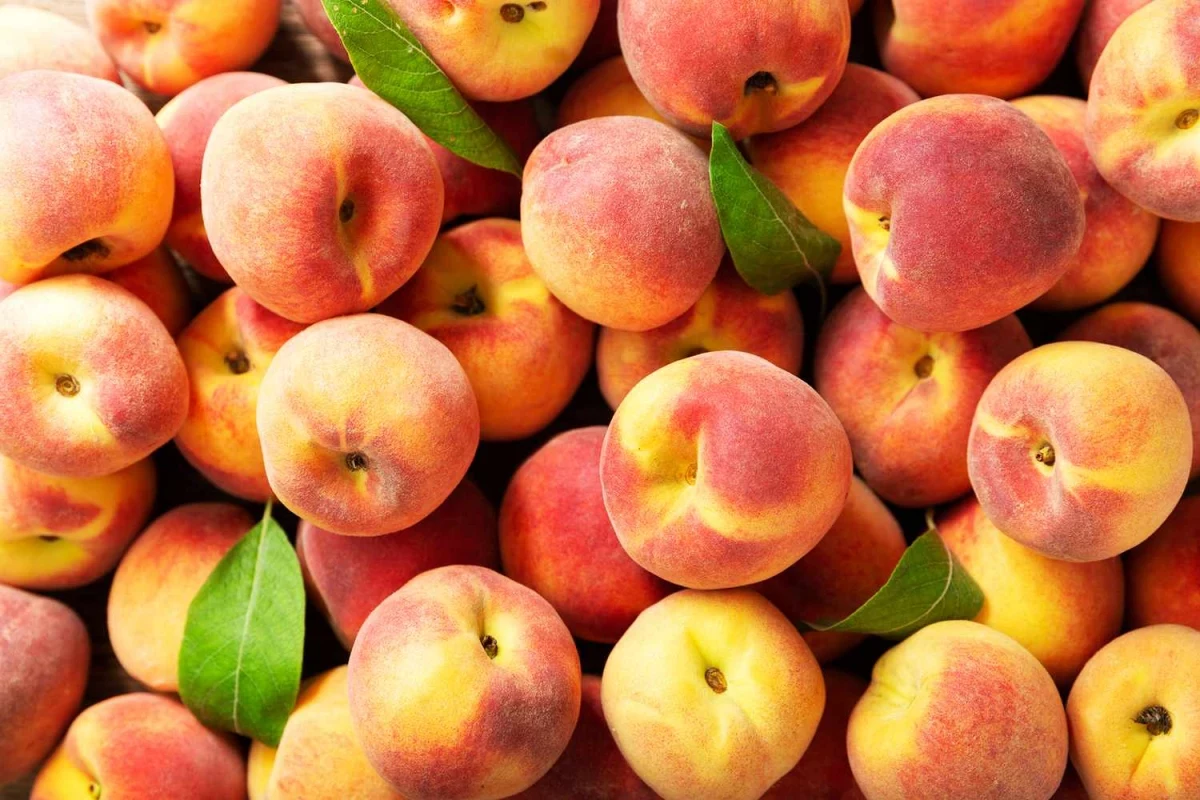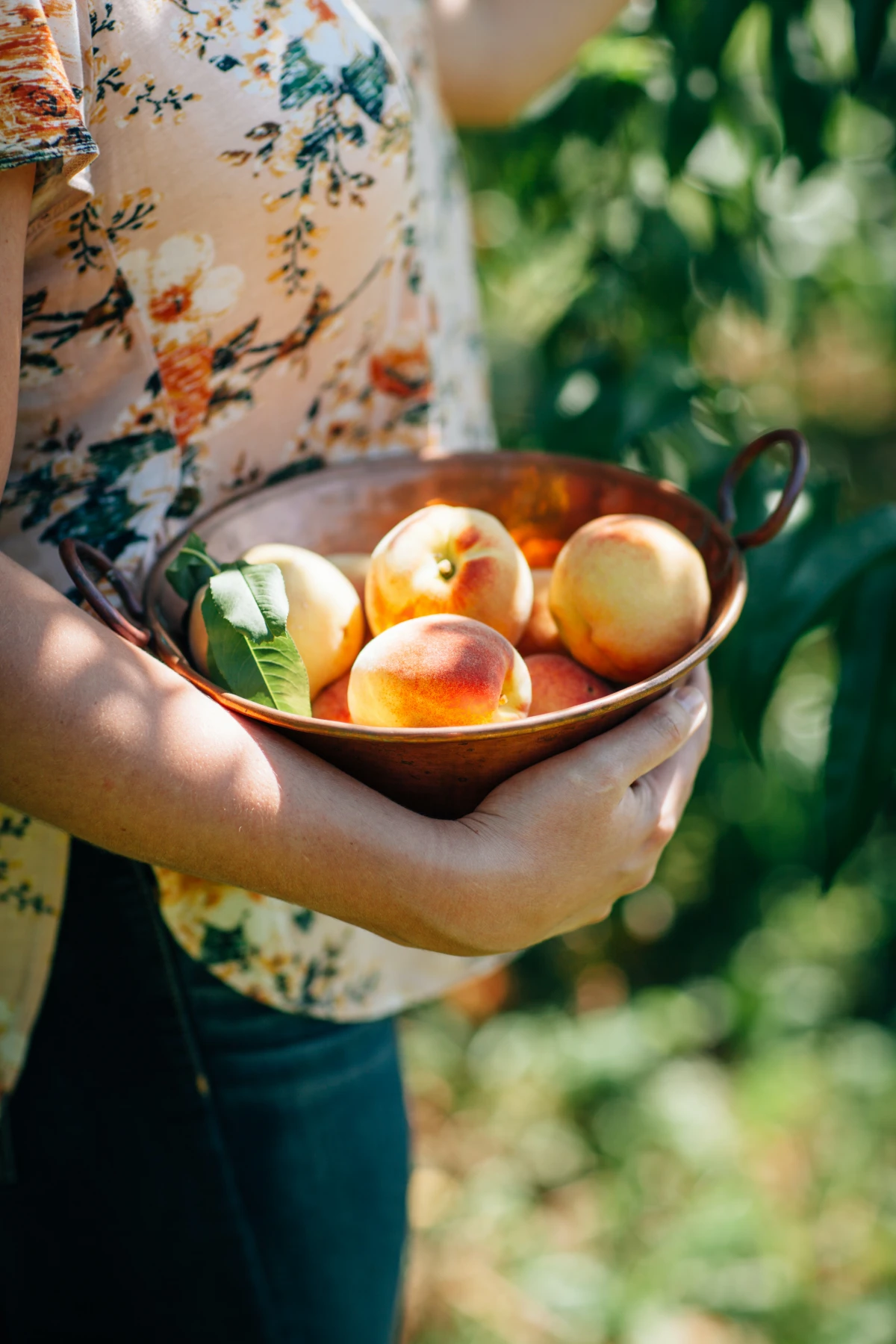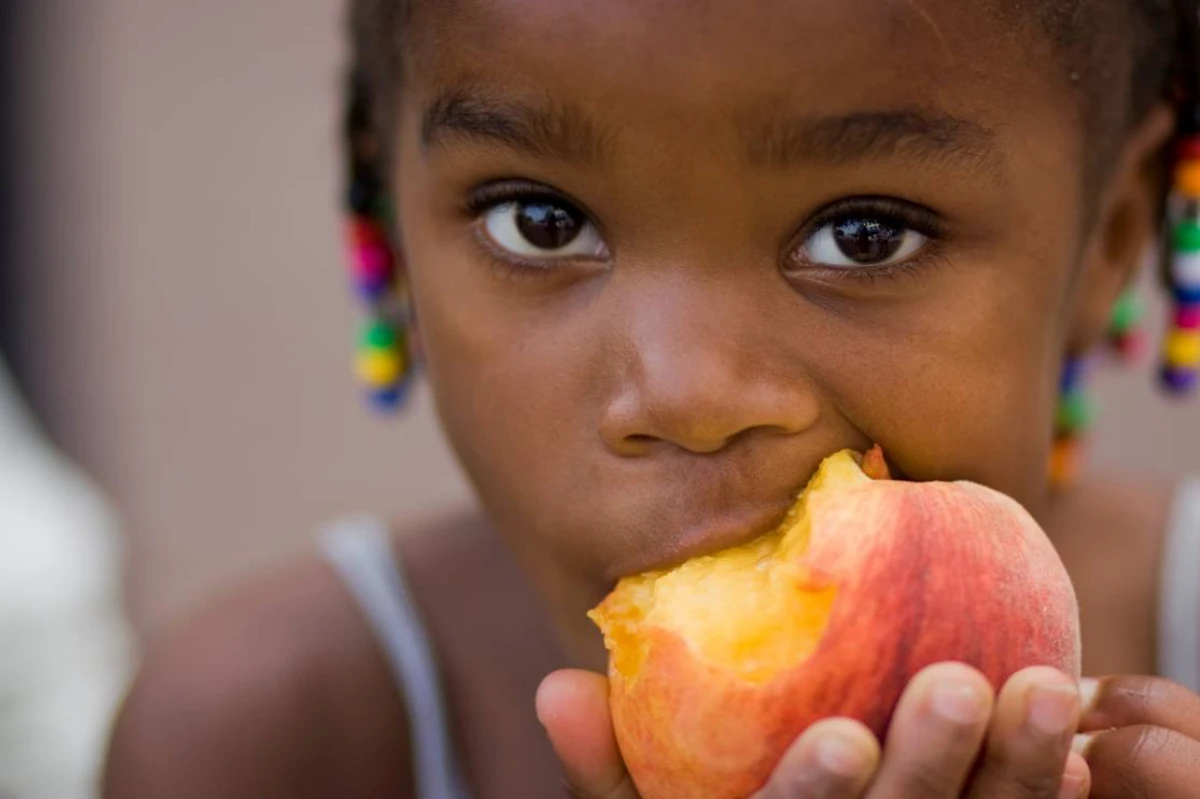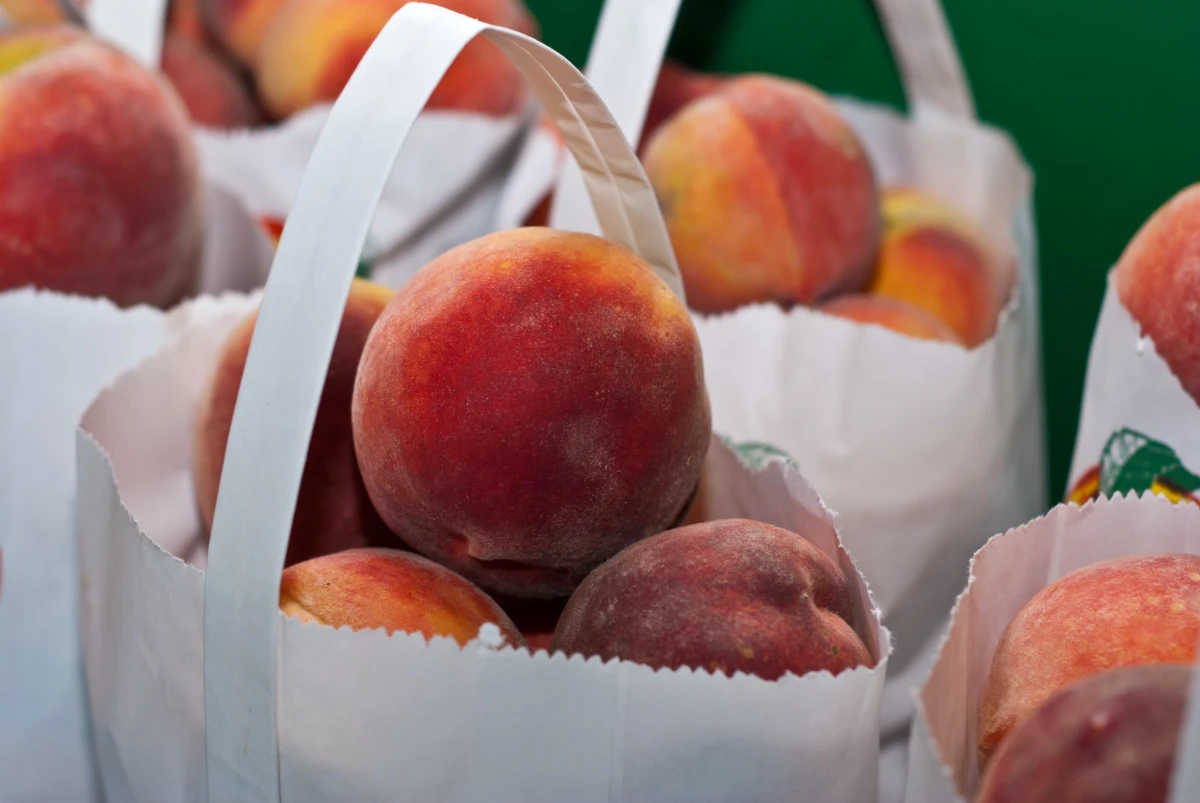Your Ultimate Guide to Finding, Using, and Loving Peaches
I’ll never forget the first truly perfect peach I ever tasted. It wasn’t from a grocery store aisle; it was from a small, family-run orchard nestled in some rolling hills. The farmer, a man whose hands told the story of decades of hard work, just reached up, plucked it from a branch, and handed it to me. You could still feel the sun’s warmth on its skin. When I bit into it, the juice literally ran down my chin, and the flavor was just… pure summer. That moment taught me that a great peach is so much more than just fruit—it’s a little piece of art made by soil, sun, and a lot of care.
In this article
After years of working with growers and chefs, sourcing peaches for menus, and teaching folks how to can that summer flavor, I’ve picked up a few things. My goal here is to share that practical, hands-on knowledge with you. We’re going to dive deep into how to choose a genuinely great peach, get to know the different kinds, and use them in ways that make them shine.

Freestone vs. Clingstone: The One Thing You HAVE to Know
Okay, let’s get right to the most important thing any baker, canner, or frustrated fruit-cutter needs to know. Is the peach a “freestone” or a “clingstone”? Honestly, knowing this will save you so much time and mess in the kitchen.
Freestone Peaches: These are the good guys for most kitchen projects. The flesh doesn’t stick to the pit. You slice it down the seam, give it a gentle twist, and the pit practically falls out. This makes them a dream for slicing, canning, and grilling. You’ll usually find these dominating the market from mid-summer onwards.
Clingstone Peaches: As you might guess, the flesh on these stubbornly clings to the pit for dear life. They are often the first peaches to show up early in the season and are incredibly juicy and flavorful. Commercial canners love them because they’re firm and hold their shape. They’re fantastic for eating out of hand, but for cooking? You’ll have to carefully cut the flesh away in wedges.

Quick tip: Not sure how to tackle it? For a freestone, just slice all the way around the seam and twist the halves apart. For a clingstone, think of it like a mango—slice off wedges around the central pit.
How to Pick a Perfect Peach (Without Annoying Everyone)
Walk through a farmers’ market in July, and you’ll see it: people squeezing peaches like they’re stress balls. Please, don’t be that person! Squeezing just bruises the delicate fruit, leaving mealy brown spots for the next person. There are much better ways to tell if a peach is ready.
- Check the Background Color: Ignore that pretty red blush—it just shows where the sun hit the peach. Instead, look at the “background” color, especially up by the stem. For a yellow peach, you want to see a deep, golden-yellow. Any hint of green means it was picked too early and will probably be a letdown. For a white peach, look for a creamy, pale-yellow background.
- Give it a Gentle Feel: If you must, cradle the peach in your whole palm and apply very gentle pressure near the stem with your fingertips. A ripe peach should have a slight give, like the fleshy part of your hand at the base of your thumb. It shouldn’t be rock-hard, but it definitely shouldn’t feel soft or mushy.
- Use Your Nose: This is the most reliable trick in the book. A ripe peach smells amazing. It should be sweet, floral, and fragrant. If you pick it up and smell nothing, it’s not ready. If it smells vaguely fermented or boozy, it’s overripe.
Oh, and a heads-up: steer clear of peaches with wrinkly skin around the stem. That’s a sign it’s old and dehydrated, and it will taste mealy and dry. A few scuffs are fine, but deep soft spots mean it’s starting to rot.

A Quick Tour of Common Peach Varieties
Just like with apples, there are tons of different peaches out there, each with its own personality. Instead of a boring chart, here’s the scoop on a few all-stars you’re likely to find.
The All-Purpose Workhorse: You’ll often see a variety that is known for being a beautiful, red-blushed freestone peach. It’s a true classic for a reason—it’s fantastic for just about everything: eating fresh, baking, canning, you name it. It has that iconic sweet-tart peach flavor and firm flesh that holds up well.
The Classic Heirloom: Some older varieties are legendary yellow freestones that were once considered the pinnacle of peaches. They have a rich, traditional, almost nostalgic flavor. Sometimes they can be a bit fibrous, so they are often better suited for pies or preserves where that texture breaks down beautifully.
The Southern Belle: Classic white peaches are often lower in acid than their yellow cousins, which gives them a distinctively mild, floral sweetness. A juicy, sweet white peach is an absolute treat eaten right over the sink. A word of caution: their delicate flavor can get lost when you cook them, so they are really best enjoyed fresh.

The Trendy Donut Peach: These little flat, white-fleshed peaches are everywhere now, and for good reason! They are super sweet with very little acidity, their skin is thin, and the tiny pit pops right out. Kids love them. They make a great snack, but their high water content means they aren’t the best choice for baking.
When you’re at the market, just ask the grower what they’re selling and what they like to do with it. Their advice is gold.
Bringing Them Home: Storage and Prep Secrets
So you brought home a beautiful haul of peaches. Great! How you handle them now makes all the difference.
For firm peaches, leave them on your counter, shoulder-side down and not touching each other, to ripen for a day or three. Once they smell fragrant and have a slight give, you can move them into the fridge to stop the ripening process. They’ll keep in there for another 3-5 days.

CRITICAL WARNING: Never, ever put an unripe peach in the refrigerator. The cold will permanently damage it, making it mealy and dry. It will never ripen properly, even if you take it out later. Only refrigerate a peach after it’s perfectly ripe.
The 30-Second Peeling Trick
For pies or jams, peeling peaches with a peeler is a pain. Here’s the pro method: blanching.
- Get a pot of water to a rolling boil and have a big bowl of ice water ready.
- Cut a small “X” on the bottom of each peach.
- Drop them into the boiling water for just 30-60 seconds.
- Immediately scoop them out and plunge them into the ice bath to stop the cooking.
- The skins will now slip right off with your fingers. It’s like magic.
Easy Grilling Guide
Wanna try something amazing? Grill them. It’s so easy:
- Halve and pit a couple of firm, freestone peaches.
- Brush the cut sides with a little neutral oil (like canola or avocado oil).
- Grill them cut-side down over medium heat for 3-4 minutes, just until you get those beautiful char marks.
- Serve warm with a scoop of vanilla ice cream or a drizzle of honey. You’re welcome.

Preserving That Summer Flavor
Eating fresh peaches is a fleeting joy, but preserving them lets you enjoy that taste all year long. Let’s talk about the two best ways to do it.
Canning Peaches (The Safe Way)
Canning is a science, and safety is key. Because peaches are acidic, you’ll use a boiling water bath canner. Always, and I mean ALWAYS, follow a tested recipe from a reliable source like the National Center for Home Food Preservation. They’ve done the lab work to make sure it’s safe.
A pro-tip is to use the “hot pack” method, where you briefly cook the sliced peaches in a light syrup before jarring them. This helps them keep their color and texture and stops them from floating to the top of the jar.
By the way, what’s a light syrup? It’s easy to make your own. Just gently heat about 2 cups of sugar in 4 cups of water until the sugar dissolves. That’s it!

Freezing Peaches (The Smart Way)
The biggest mistake people make is just throwing sliced peaches into a freezer bag. You end up with a giant, brown, icy brick of fruit. Here’s how to do it right:
- Peel and slice your peaches. A little lemon juice tossed in will keep them from browning.
- Spread the slices in a single layer on a parchment-lined baking sheet.
- Flash-freeze them for a couple of hours until they’re solid.
- Once frozen, you can transfer the individual slices into a freezer bag.
Now you can just grab a handful for a smoothie or a pie without needing an ice pick.
A Final Word on Health and Pesticides
Peaches are packed with fiber, Vitamin A, and Vitamin C—all great stuff for your gut, skin, and eyes. But like any food, it’s about balance.
You may have heard that peaches often land on the “Dirty Dozen” list, which highlights produce with higher pesticide residues. This can make people nervous, but let’s be practical. What does this actually mean for you?

If buying organic peaches fits your budget, that’s a fantastic choice. But if it doesn’t, don’t sweat it. The health benefits of eating peaches far outweigh the potential risks. Just give your conventional peaches a good wash under cool running water, rubbing the skin gently with your fingers. Honestly, eating a well-washed conventional peach is a million times better for you than eating no peach at all!
Budget Tip: Peaches are cheapest when they’re in peak season (think mid-to-late summer). If you plan on canning or freezing, look for a U-pick farm or ask a market vendor for a deal on a whole box. You can often get a 25-pound case for around $30-$40, which is a massive steal compared to the typical $2-$4 per pound at the grocery store.
Inspirational Gallery
The cardinal sin of peach care: Refrigerating them too soon. A cold environment halts the ripening process permanently, leaving you with a mealy, flavorless fruit. Always let your peaches ripen on the counter at room temperature until they are fragrant and give slightly to the touch. Only then should they see the inside of your fridge.
The classic dessert ‘Peach Melba’ was created in the 1890s by French chef Auguste Escoffier at the Savoy Hotel in London to honor the famous Australian soprano, Nellie Melba.
Think beyond the cobbler. Peaches have a stunning savory side that pairs beautifully with salty and creamy flavors. Try these combinations for an unforgettable appetizer or salad:
- Grilled peach halves with a dollop of burrata, fresh basil, and a drizzle of balsamic glaze.
- Thinly sliced peaches wrapped in prosciutto for a perfect sweet-and-salty bite.
- Diced peaches mixed with red onion, jalapeño, and cilantro for a vibrant salsa to serve with pork or chicken.
Bought peaches that are still rock-hard?
Don’t despair. Place them in a paper bag (not plastic) and fold the top over. The ethylene gas the peaches naturally release will be trapped, speeding up ripening. You can add a banana or an apple to the bag to accelerate the process even more. Check them daily; they should be perfectly ripe in one to three days.
Yellow Peaches: These are your classic, all-purpose peaches. They have a higher acidity, which gives them that tangy-sweet, traditional peach flavor. Their robust taste holds up well to cooking and grilling.
White Peaches: Noticeably less acidic, their flavor is delicate, floral, and almost candy-like sweet. They are best enjoyed fresh to appreciate their subtle nuances.
- A deep, caramelized sweetness that regular cooking can’t match.
- Stunning, dark grill marks for a professional-looking dish.
- A subtle, smoky flavor that complements both sweet and savory pairings.
The secret to unlocking these flavors? The barbecue grill. Just brush peach halves with a little oil and grill them cut-side down for 3-4 minutes.
While Georgia is famously ‘The Peach State,’ California actually produces the most peaches in the United States, followed by South Carolina.
So why the Georgia nickname? It’s all about quality and reputation. Georgia’s climate is said to produce exceptionally sweet and juicy peaches, a brand identity they’ve cultivated since the post-Civil War era. When you see a ‘Georgia Peach,’ you’re not just buying a fruit; you’re buying into a long legacy of Southern summer sweetness.
Capture the essence of an Italian summer with a classic Bellini. Simply purée one ripe, peeled white peach and gently pour a high-quality, dry Prosecco, like La Marca or Mionetto, over the top in a chilled flute. The magic is in its simplicity—the fragrant peach and the crisp bubbles create a drink that is both elegant and effortlessly refreshing.
- For Ripening: Leave on the counter, stem-side down, not touching each other to prevent bruising.
- For Storing: Once perfectly ripe, move them to the fridge’s crisper drawer for up to 5 days.
- For Freezing: Slice, lay on a baking sheet, and freeze solid before transferring to a bag. This prevents them from clumping together.
Don’t mourn the end of peach season! High-quality frozen peaches are an excellent year-round alternative for baking and smoothies. Look for brands like Wyman’s or the 365 Whole Foods Market brand that offer sliced peaches frozen at peak ripeness with no added sugar or syrup. For pies or cobblers, toss them in a little cornstarch while still frozen to absorb excess moisture, ensuring your dessert doesn’t get watery as it bakes.










